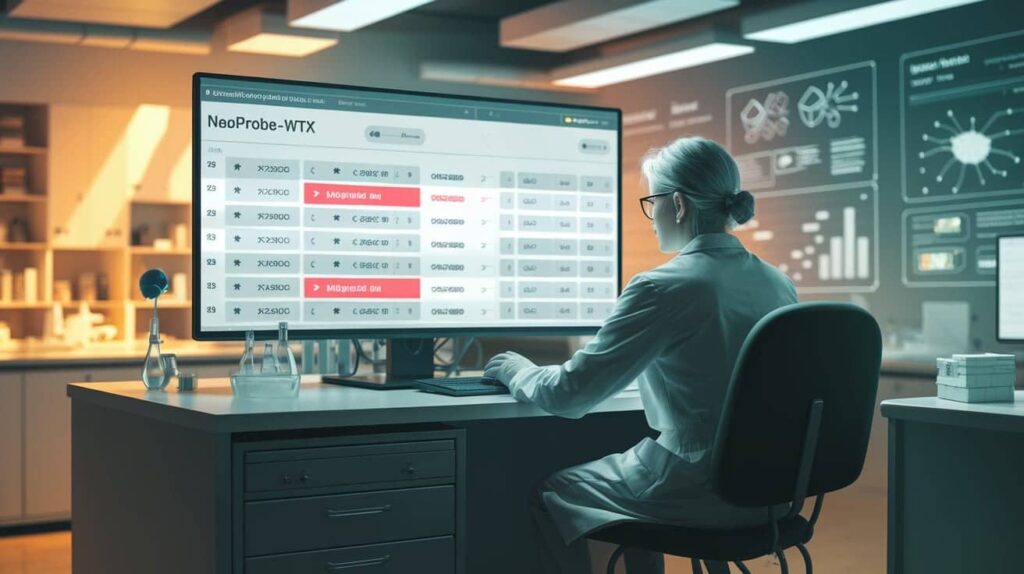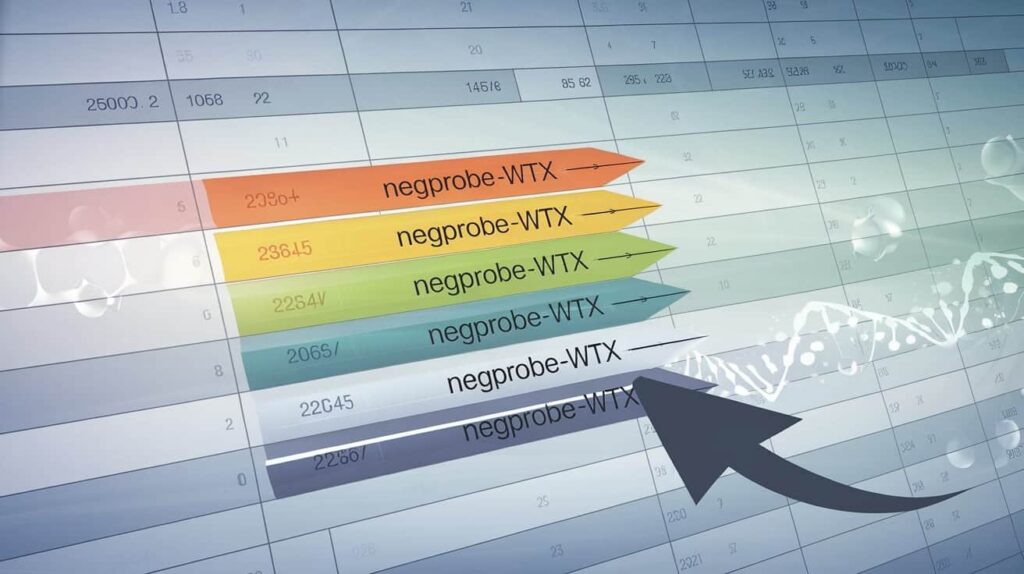When I saw many “NegProbe-WTX” rows in my count files, I thought I had made a mistake in my work. But later, I learned they were there on purpose to check the quality of the experiment. It reminded me to understand my data better before assuming something is wrong.
There are many “NegProbe-WTX” rows because they check for mistakes or noise in the data. They show up a lot because of how the experiment or data was set up.
Stay with us to learn why there are so many NegProbe-WTX rows in count files! We’ll explain it in simple words and share easy tips to handle them. Don’t go anywhere!
What does “NegProbe-WTX” mean in count files?
“NegProbe-WTX” in count files are like the safety nets of your experiment. These negative control probes don’t measure anything related to the genes you’re studying, but they help spot any background noise or errors that could mess with your results.

Think of them as a way to double-check that the data you’re getting is truly from the genes you’re interested in, and not from random interference. Including these controls helps make sure your experiment is on track and your results are reliable. It’s like having a backup plan to catch any mistakes before they affect your findings.
Are multiple NegProbe-WTX rows a mistake in my data?
Seeing multiple “NegProbe-WTX” rows isn’t usually a mistake—they’re there for a reason. These rows are like backup checks to make sure there’s no unwanted noise or errors in your data. Having several of them is pretty normal, as they help confirm the data you’re working with is accurate.
But if you notice more rows than you expected, it might be worth taking a closer look at how your experiment was set up or how the data was processed. It’s always good to double-check to make sure everything is in order and the extra rows are needed.
Do I Need To Remove Negprobe-Wtx Rows Before Analysis?
Remove for gene expression analysis:
If you’re focusing on gene expression, getting rid of the “NegProbe-WTX” rows can make things simpler. These rows don’t give you any useful info about the genes you’re interested in, so clearing them out helps you focus on what really matters.
Keep for quality checks:
If you’re using “NegProbe-WTX” rows to check for background noise or any errors in the data, it’s best to keep them. They act like a safety net, making sure the results you’re seeing aren’t just random or caused by problems in the experiment.
Depends on your goal:
Whether you remove or keep these rows really comes down to what you’re trying to do with the data. If you need to check the quality of the data or troubleshoot, keep them. But if you’re just analyzing gene expression, removing them clears up the data and makes it easier to understand.
Clean up the data:
If your dataset is huge and filled with extra rows, like “NegProbe-WTX,” removing them can help you see the important stuff more clearly. It’s like decluttering a workspace—it makes everything feel more organized. Just make sure you don’t need those rows for quality control before you clean up.
Can NegProbe-WTX rows affect my results?
Yes, “NegProbe-WTX” rows can affect your results if you’re not careful. If there are too many of them, they can make your data feel cluttered and harder to make sense of. They might also mess with your analysis if you accidentally include them in the wrong calculations.

But, when used correctly, these rows are really helpful for catching background noise and errors, making sure your results are as accurate as possible. It’s all about managing them properly so they don’t get in the way of finding the real answers.
What should I do if there are too many NegProbe-WTX rows?
Check your experiment setup:
Take a moment to review how your experiment was set up. These rows are there for a reason, usually as controls to check for errors. But maybe you don’t need all of them for your specific analysis, so it’s worth checking if they’re really necessary.
Remove the extra rows:
If you realize that the “NegProbe-WTX” rows aren’t adding anything useful, feel free to remove them. Cleaning up the data will make it much easier to focus on the important stuff, like the actual gene expression you want to analyze.
Look for mistakes in processing:
Sometimes too many rows show up because of a mistake in how the data was handled. Maybe files got mixed up or something went wrong during data processing. It’s a good idea to double-check everything to make sure nothing went wrong along the way.
Follow the experiment guidelines:
Check the guidelines or protocols from your experiment to see how many negative controls should actually be there. If you know the expected number, it’ll help you figure out if you really have too many rows or if everything is just fine.
Keep track of your decisions:
Whatever you decide, be sure to note why you made that choice. Writing it down helps you stay organized and makes it easier to explain your reasoning later on.
Can I merge multiple NegProbe-WTX rows into one?
Yes, you can merge multiple “NegProbe-WTX” rows into one if they’re the same or just repeat the same control across different samples. It can help clean up your data and get rid of any extra clutter. Just make sure that by merging, you’re not losing any important details, like differences between your samples.

Check if merging is allowed by your experiment’s guidelines or protocols. Always save a backup of your original data before making any changes, so you can go back if needed. Merging can make your dataset easier to read and work with. Just double-check that merging won’t affect your final analysis results.
Frequently Asked Questions:
Why do I see multiple “NegProbe-WTX” rows for different samples in my count files?
When you process multiple samples together, “NegProbe-WTX” rows may appear for each sample as part of quality control checks. Each sample might have its own entry for the same negative control probe to ensure consistency and check for errors or background noise across all samples.
Should I be worried if there are too many “NegProbe-WTX” rows in my data?
Not necessarily. Multiple “NegProbe-WTX” rows are often expected as they serve as negative controls to check for false signals. However, if you see an unusually high number of them, it’s worth reviewing your experiment’s setup and data processing to ensure they’re needed.
Can “NegProbe-WTX” rows affect my data analysis if they appear too often?
If there are too many “NegProbe-WTX” rows, they could clutter your dataset, making it harder to focus on the important gene expression data. It’s important to ensure they are only included for quality control purposes and not as part of your primary analysis.
Do all “NegProbe-WTX” rows have the same function in count files?
Yes, all “NegProbe-WTX” rows generally serve the same purpose: to act as negative controls to detect any background noise or non-specific binding. However, they may be repeated across different samples for consistency and error-checking purposes.
Can I filter out “NegProbe-WTX” rows during data preprocessing?
Yes, you can filter out “NegProbe-WTX” rows if they are not needed for your analysis. If they don’t contribute to your understanding of gene expression or other key results, removing them during preprocessing can help streamline your analysis. Just be sure they’re not playing a crucial role in quality control.
Conclusion:
Having lots of “NegProbe-WTX” rows in your count files is usually nothing to worry about. These rows are there to help check for any background noise or errors in your data, acting as a safety net. While they might make your data look a bit cluttered, they’re actually pretty important for making sure your results are accurate.
Just make sure you understand why they’re in your data—whether it’s for quality checks, fixing issues, or normalizing. By managing them properly, you’ll keep your results clear and reliable.
Also Read:
- LT Donald Messick Multnomah County Sheriff’s Office – Key Insights Revealed!
- Connections Answer – Transform Your Networking!
- Taelyn Dobson – Who Is She?

